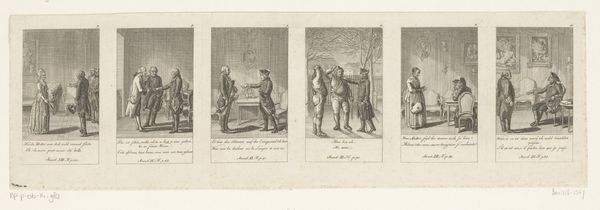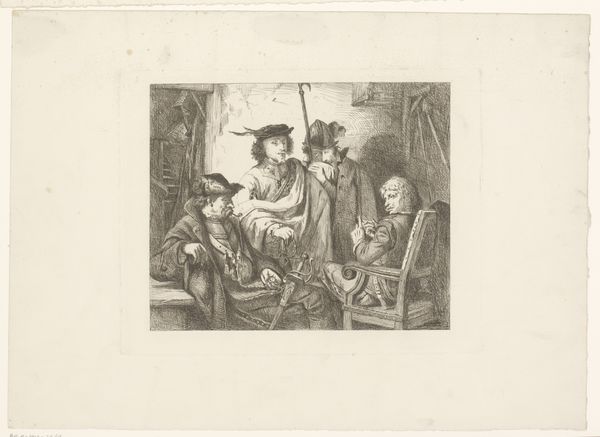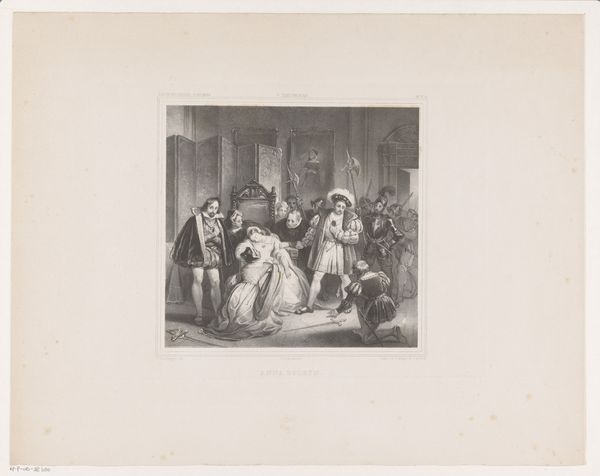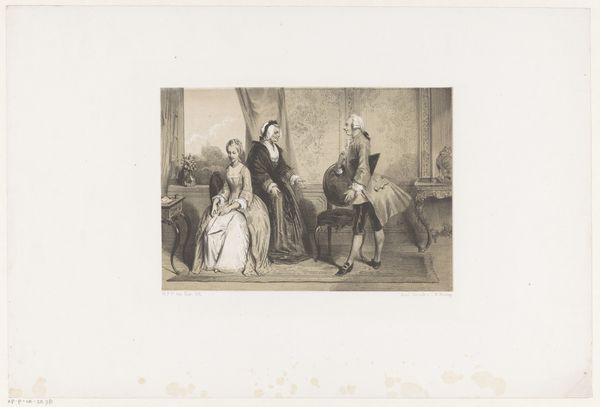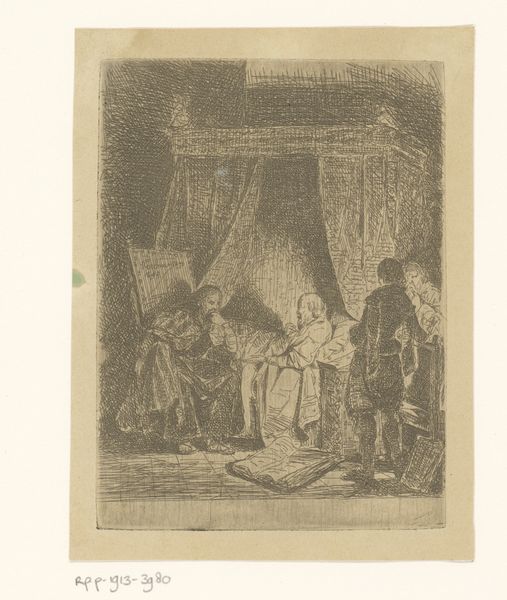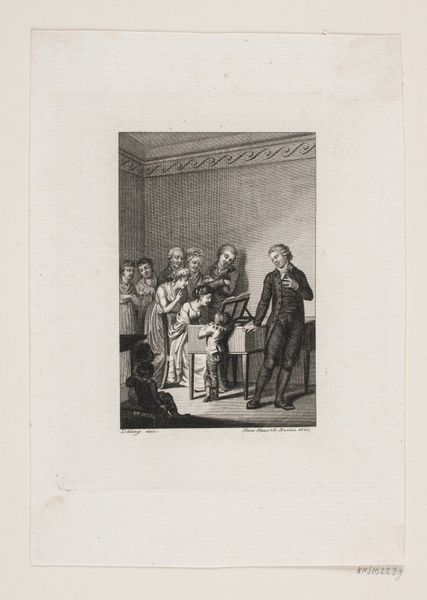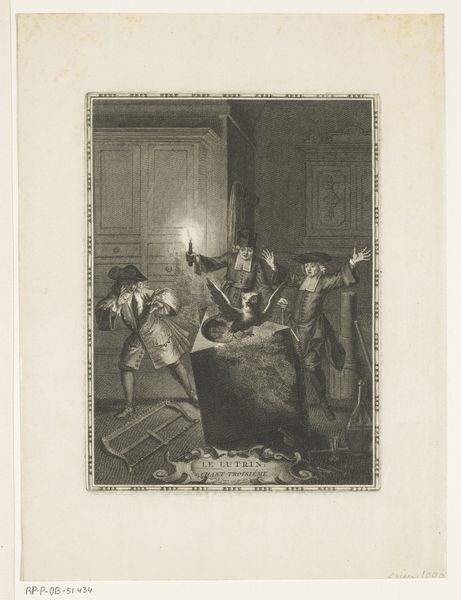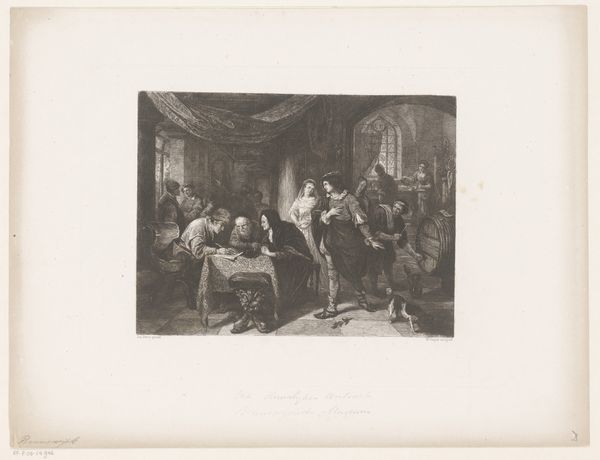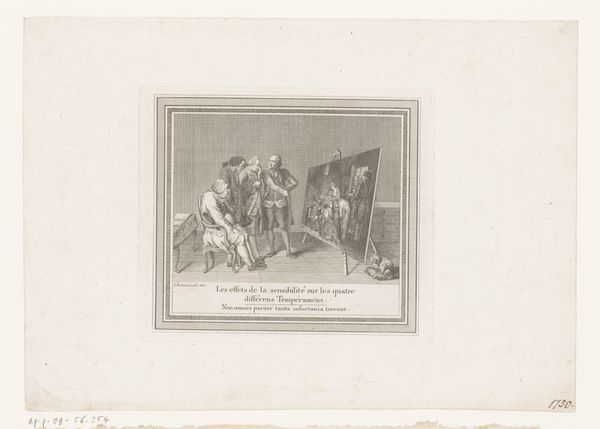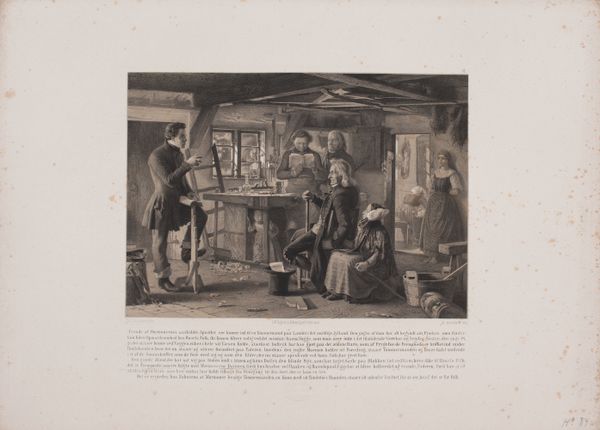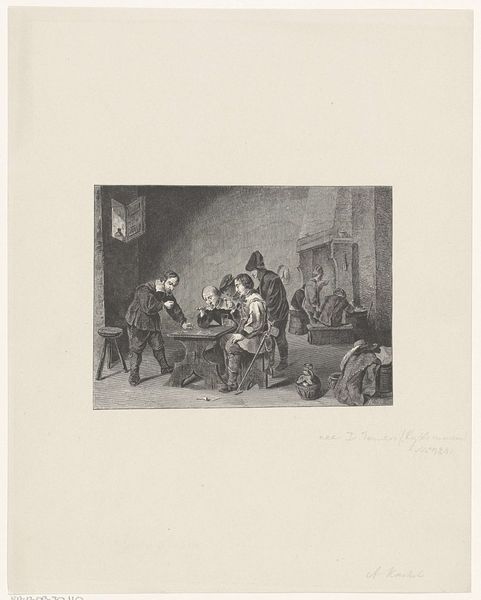
print, etching, engraving
#
narrative-art
# print
#
etching
#
old engraving style
#
personal sketchbook
#
sketchbook drawing
#
genre-painting
#
sketchbook art
#
engraving
Dimensions: height 139 mm, width 198 mm
Copyright: Rijks Museum: Open Domain
Curator: There’s an almost theatrical hush in Lèopold Flameng's print, created sometime between 1841 and 1910. It’s called "Benserade leest een brief voor" – "Benserade Reads a Letter Aloud." It strikes me as a captured moment, a pause in a play almost. What leaps out at you? Editor: I am immediately pulled into the expressions of the crowd and the deep crosshatching giving a strong sense of depth. They look, honestly, a bit… bewildered. Like the plot has thickened perhaps too suddenly for them. All except the speaker, they look to me a touch weary. The reading room feels cloistered too. What kind of story is about to unfurl? Curator: The faces definitely tell a story, don't they? As a genre painting in print, it plays with intimacy, capturing the audience's reaction as much as the letter's contents. The figures are arranged almost like players on a stage, frozen in a tableau of anticipation. Given the title, there's a connection here to Isaac de Benserade, the 17th century French poet who translated Ovid. Is this perhaps some visual pun, maybe some pointed inside joke of his writing now being played out for the enjoyment of an audience centuries after it happened? Editor: Right! The symbol of the letter is powerful here, representing both truth and perhaps fabrication, too – the text dictates the actions of those within this space. The long white face of the character reading aloud could even represent a piece of unfolded paper or parchment being stretched thin, for a certain meaning to be made apparent. I imagine what sort of missive could inspire this sort of solemn awe. Or maybe the piece gestures toward how stories bind and compel us across time. Curator: Perhaps the printmaking itself, as a medium, is speaking to this continuity too. Each etched line carrying stories forward from Benserade's era through to Flameng's, and onward to us. Editor: Yes! And the print allows infinite possibilities to share it again and again. This artwork prompts me to contemplate how certain images stay with us. They become more evocative, more psychologically poignant with time. The narrative itself becomes a type of archetypal language.
Comments
No comments
Be the first to comment and join the conversation on the ultimate creative platform.


